Join us as we discuss the story of Geauga Lake, one of the most infamous American parks, and how it rose and fell. The park that joined the inversion trend early evolved into the largest theme park in the world (but that was a mistake). Let’s delve even further into the history of the once-record-setting park in Aurora, Ohio. (Republished in 2025, along with the remastered podcast episode. Please note the article was written in 2023).
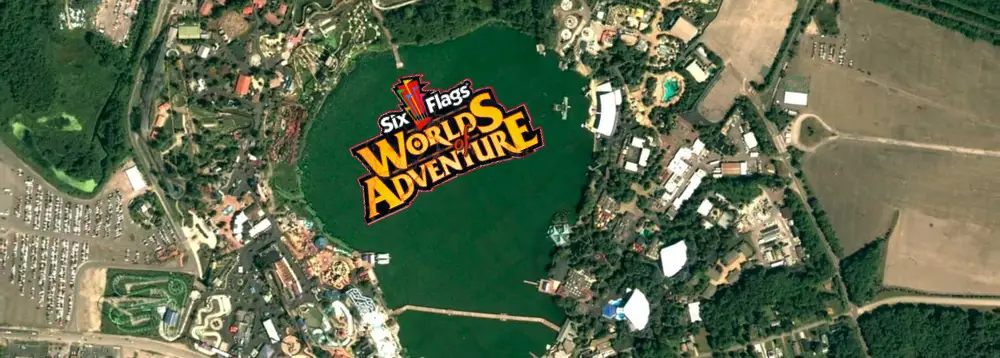
This article is paired with an episode of Coaster Kings Radio. Be sure to subscribe to the podcast and listen to this episode for even more chat about Geauga Lake. Newly Remastered in 2025: Get ready for an emotional roller coaster as Sean and Alex discuss the history of the former theme park in Ohio: Geauga Lake & Wildwater Kingdom!
The (hi)story of Geauga Lake
Let’s start from the beginning. In 1872, Geauga Lake opened as Giles Pond and Picnic Lake. In 1888 the park was renamed Geauga Lake and transformed into an amusement park under new management.
Geauga Lake changed hands once more in 1925 and unveiled its world-famous Big Dipper (then Sky Rocket), a very large and notable attraction for the era. The managerial structure of the park remained unchanged for the next 20 years.

Interestingly, in 1966, Cedar Point Director of Marketing Earl Gascoigne traveled to SeaWorld San Diego and requested developer George Millay to join him in bringing a SeaWorld park to Ohio. George Millay declined the opportunity.
Two years later, in 1968, Earl Gascoigne and three other former Cedar Point employees found Funtime Inc and bought Geauga Lake for $5 million. Gascoigne reunited with George Millay and persuaded him to construct SeaWorld Ohio as a sister park to Geauga Lake in order to increase attendance and begins a relationship of co-marketing the parks to increase attendance at both.
The second SeaWorld park, SeaWorld Ohio, opened across the lake in 1970 and is an immediate success. Due to the immense popularity of marine life parks at the time, SeaWorld Ohio welcomed over 1.1 million visitors in its inaugural year against an initial estimate of 500,000.
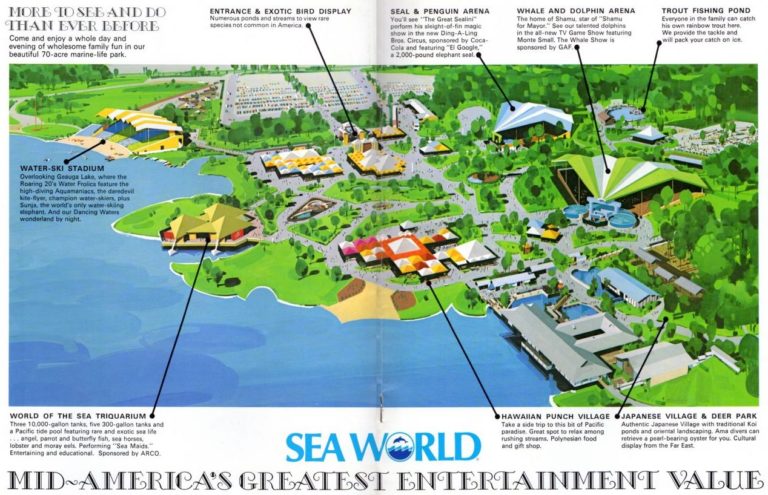

After the success of the Aurora and San Diego SeaWorld parks, the company launched SeaWorld Orlando in 1973, whose location was inspired by Walt Disney World. This park rapidly became the company’s global cultural epicenter and attendance leader.
In the 1970s, Geauga Lake replaced its 1952 NAD Comet Jr. wooden roller coaster with a Pinfari Zyklon roller coaster. In 1977 the park made a power move by adding a custom Arrow coaster, Double Loop, which was the first ever coaster to incorporate two vertical loops. With the addition of an Arrow Corkscrew coaster the following year, they become the first theme park ever to feature multiple full-circuit inverting roller coasters, a move that was exemplary in the theme park industry.
In 1983, Funtime Inc. expanded and began operating Wyandot Lake in Columbus, Ohio (now Zoombezi Bay at the Columbus Zoo) and acquired a 50% stake in Darien Lake. At this time, Geauga Lake adds a water park, which is included with park admission. Two years later, SeaWorld’s parent company, Harcourt Brace Jovanovich Park Group, announced its intention to acquire Funtime Inc. and merge the two Ohio parks, but the acquisition fell through. This is the first of numerous proposals to merge parks into a single destination.
In 1987, Geauga Lake announced the opening of their first new roller coaster in ten years, the Curtis Summers-built Raging Wolf Bobs, a (less intense) recreation of Chicago’s renowned Riverview Park Bobs. A year later, SeaWorld of Texas (later SeaWorld San Antonio) opened as the largest marine life park in the world, with park sections designed after Florida’s Boardwalk & Baseball Park and Cypress Gardens. In 1989, Anheuser-Busch acquired the four SeaWorld parks, as well as Florida’s Boardwalk & Baseball and Cypress Gardens Parks from Harcourt Brace Jovanovich Park Group.
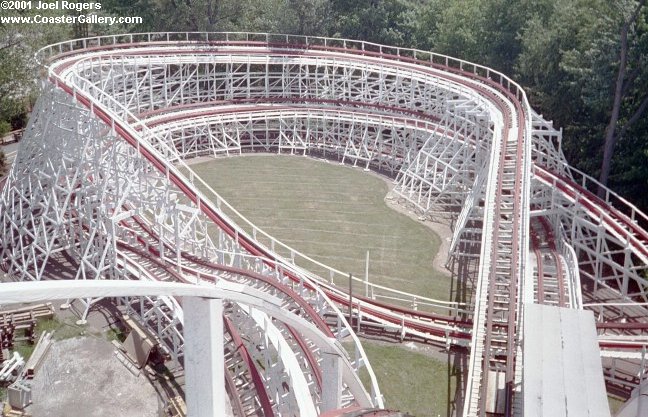
In 1995, six years after the sale of SeaWorld Ohio, Funtime Inc. (and thus Geauga Lake) is sold to Premier Parks, who seized the opportunity to add new attractions to Geauga Lake and launched an expansion plan.
The first additions to Geauga Lake were the Intamin River Rapids attraction and the Mind Eraser (Vekoma Boomerang) in 1996, which replaced the Arrow Corkscrew. 1997 marks the opening of Mr. Hyde’s Nasty Fall, an Intamin 1st Gen Freefall relocated from the closed Rocky Point Park in Rhode Island, and the announcement of Serial Thriller (Vekoma SLC) for 1998.
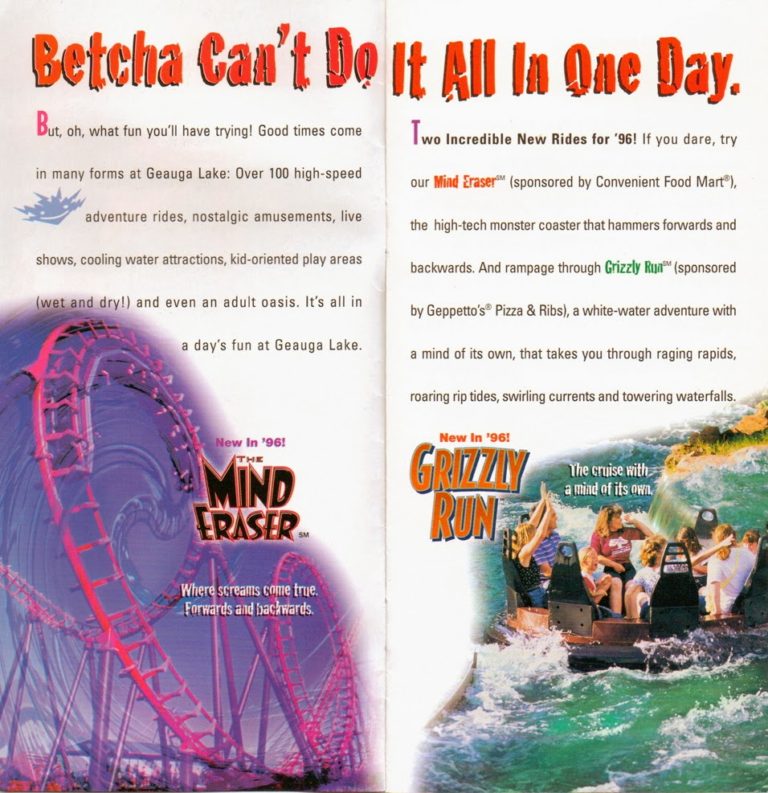
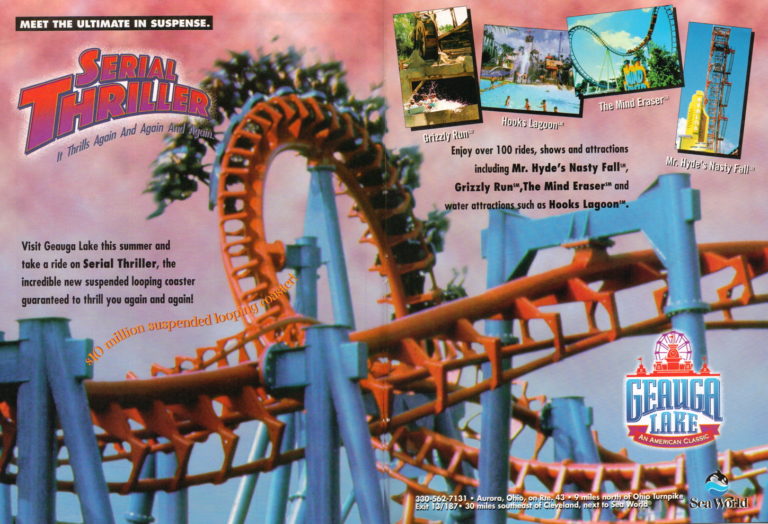
This is when everything begins to move at a dizzying speed. Premier Parks acquires Six Flags in 1998, retaining the Six Flags name. Their proposal to revitalize Old Indiana with coasters from Opryland USA and Riverside (SFNE) is canceled so that they can concentrate on the Six Flags parks. Old Indiana’s Americana Ferris Wheel was relocated to Geauga Lake, replacing the park’s Eli Bridge Ferris Wheel.
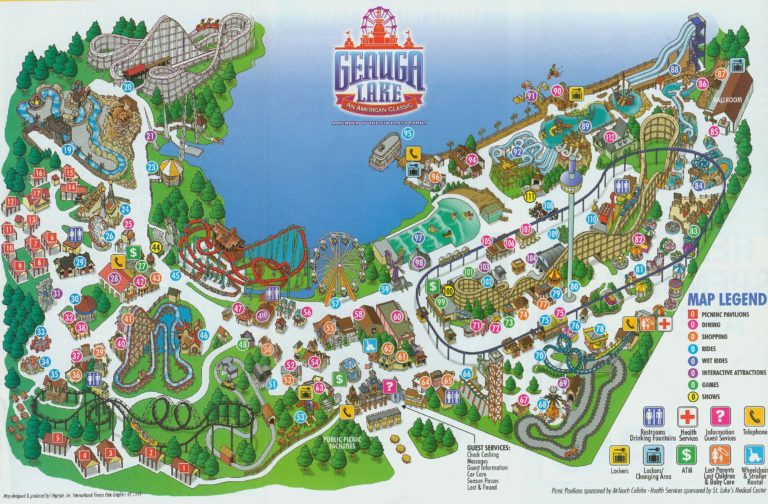
In 1999, SeaWorld Ohio across the lake changes its name to SeaWorld Cleveland, while Geauga Lake is announced to be rebranded as Six Flags Ohio. The rebranding and relaunch of the park cost between $40 and $60 million, and four new roller coasters were to be added (Roadrunner Express, Batman: Knight Flight, Superman: Ultimate Escape, Villain).
The mighty 2000s had come, and in 2000, SeaWorld (Anheuser-Busch) proposed to acquire Six Flags Ohio in order to consolidate the two parks into one large park, focusing on a combination of wildlife, marine life, and rides, something that Anheuser-Busch had found to be very successful at SeaWorld San Antonio. Due to a legal agreement between former Geauga Lake and SeaWorld Ohio, it was not possible to add coasters to SeaWorld alone.
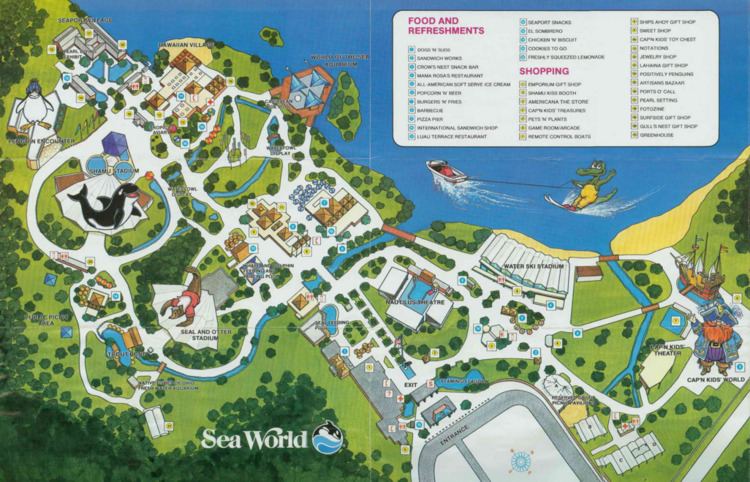
Anheuser-Busch commited to Six Flags’ counteroffer to purchase SeaWorld Cleveland. Six Flags’ purchase of SeaWorld for $110 million was deemed a great deal. Finally, a single company is in control of both sides of the lake and is combining the parks into one single gate. SeaWorld took their own animals and Six Flags recieved an empty shell of a marine attraction, left to add all their animals themselves. Animals were acquired through a combination of purchases and leases from parks outside of the corporation, such as the loan of the orca Shouka from Marineland Antibes (France), as well as relocations of animals from Six Flags Marine World and Six Flags Great Adventure.
Six Flags Ohio became Six Flags Worlds of Adventure in 2001, incorporating the former SeaWorld park and Six Flags Ohio park under a single entrance. The park was 700 acres in size, making it the largest theme park in the world, located in a rural area of Ohio (what could possibly go wrong?). 2001 also saw the addition of X-Flight, a Vekoma Flying Dutchman coaster – the park’s 4th new E-ticket coaster in just 2 years.
In terms of attendance, 2001 was a fruitful year for the new Six Flags Worlds of Adventure, with 2.7 million guests visiting the park. This is despite the fact that the park’s operation presented a number of challenges. The city authorized Six Flags to construct a 210-foot-tall hyper coaster, which was an even more ambitious plan. These schemes never came to fruition due to financial difficulties.
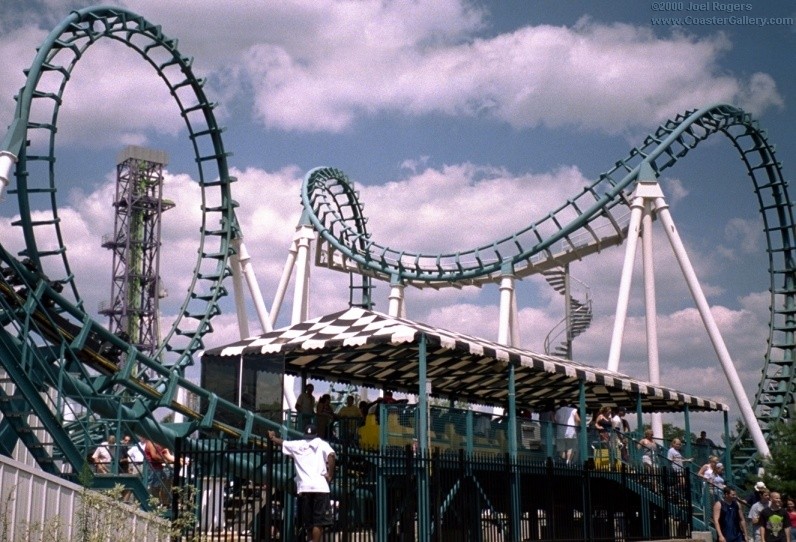
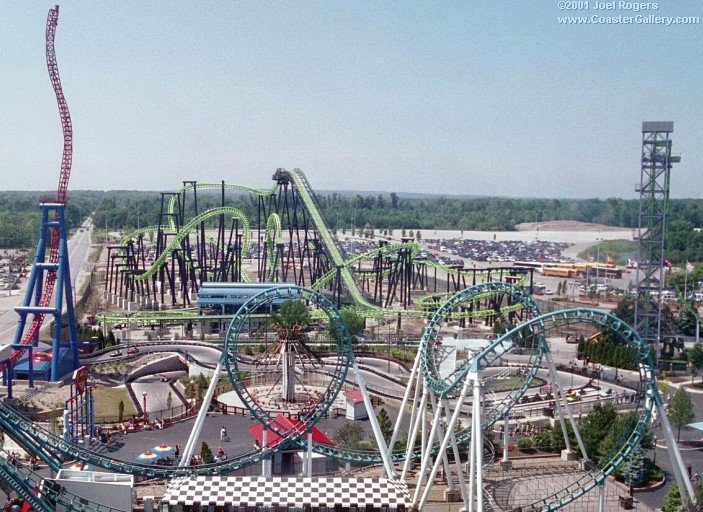
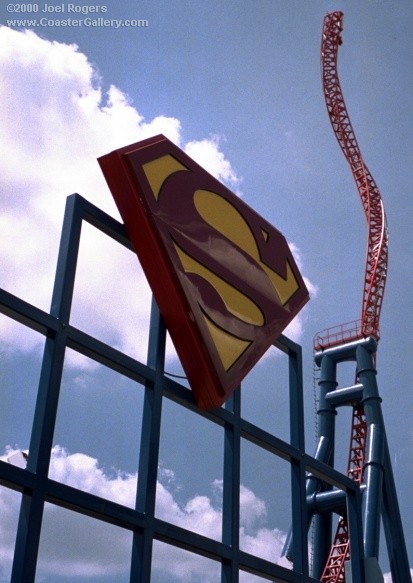
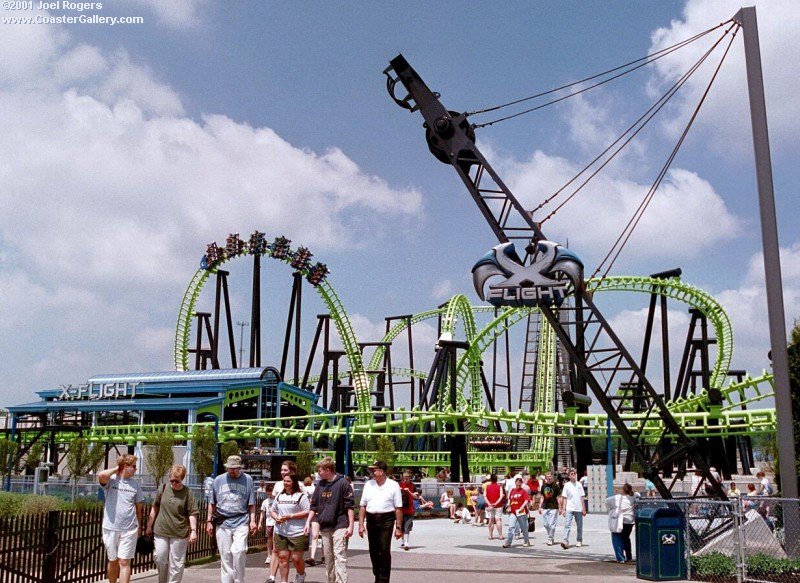
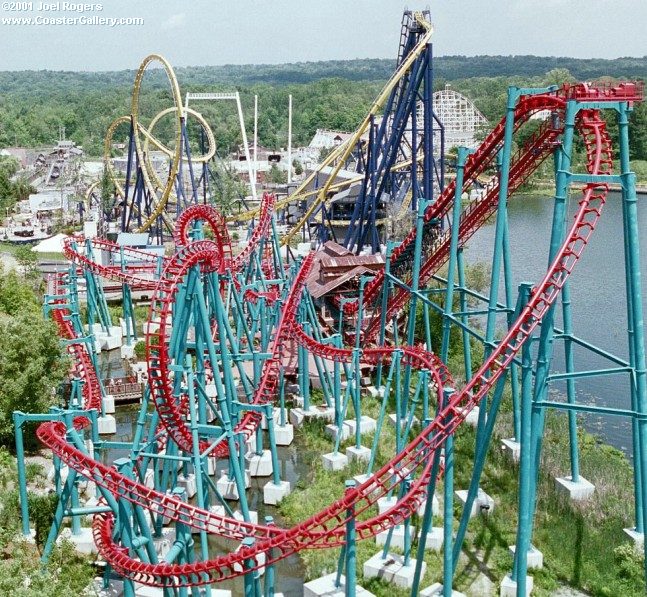
In an effort to keep the park marketable in 2003, Six Flags added Hurricane Mountain, a complex of record-breaking water slides, to the water park and renames it Hurricane Harbor. Contributing to the marketing of a marine life/wildlife park, a water park, and an amusement park all in one.
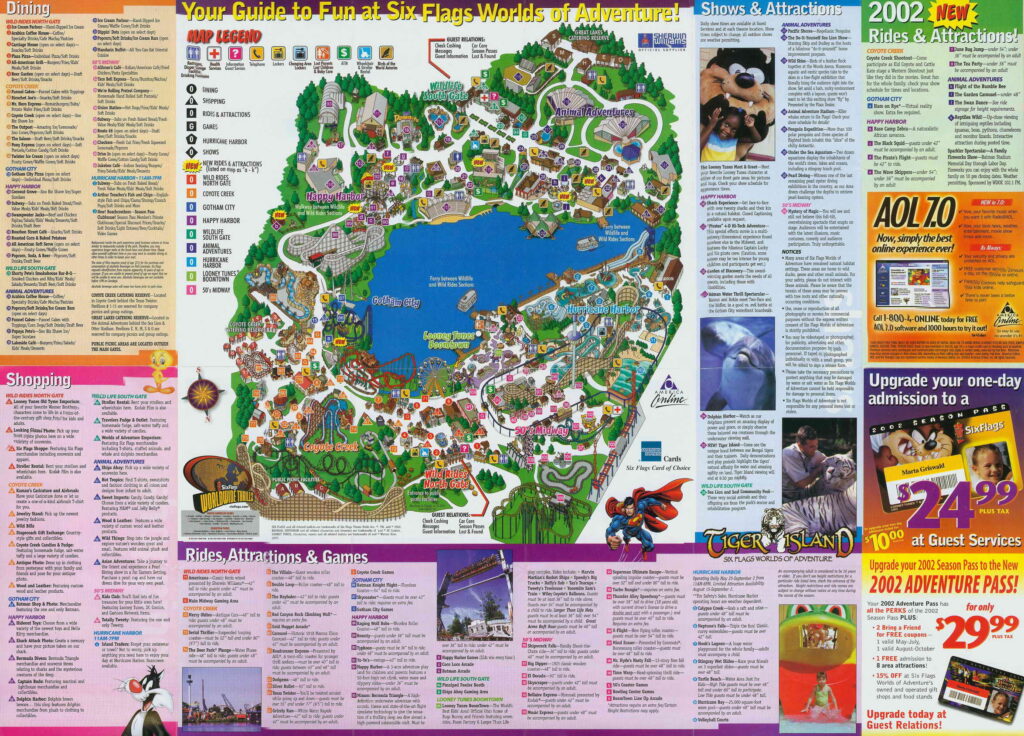
As many are aware, this was not in the least a sustainable business strategy, and as a result, Six Flags began selling assets in 2004 due to extreme financial difficulties, including Six Flags Worlds of Adventure. At this juncture, annual attendance had dropped from its peak of 2,7 million in 2001 to just 700,000. One month prior to the 2004 season’s opening, Cedar Fair purchased the park for $145 million.
Cedar Fair was compelled to rename and loosely retheme the amusement park in a matter of days due to a one-month retheme and licensing launch. Cedar Fair chose not to operate any of the animal aspects of the park and Six Flags took their animals with them to relocate to Six Flags Discovery Kingdom (then Six Flags Marine World). In an endeavor to reduce operating capacity, Cedar Fair closed the park’s animal area (former SeaWorld site). In the hasty relaunch of the park Batman: Knight Flight was renamed Dominator, Superman: Ultimate Escape was renamed Steel Venom, Roadrunner Express was renamed Beaverland Mine Ride, Serial Thriller was renamed Thunderhawk, Mind Eraser was renamed Head Spin, and Hurricane Harbor was renamed Hurricane Hannah’s.
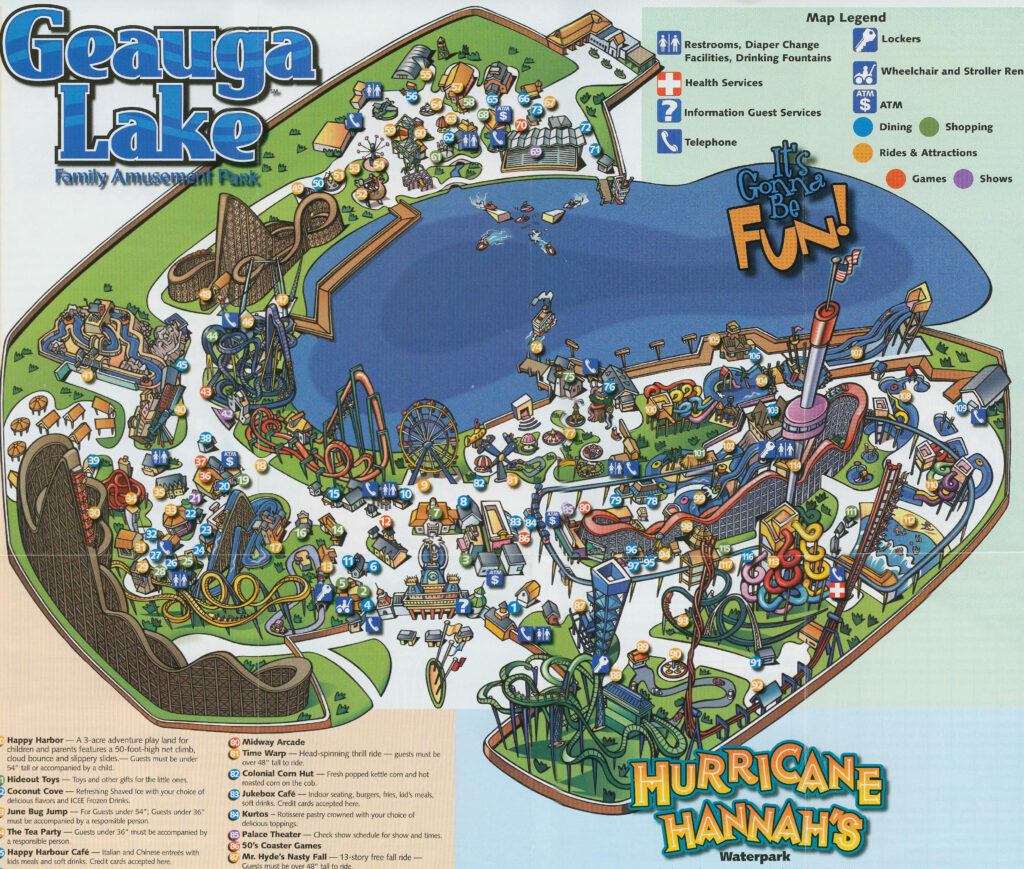
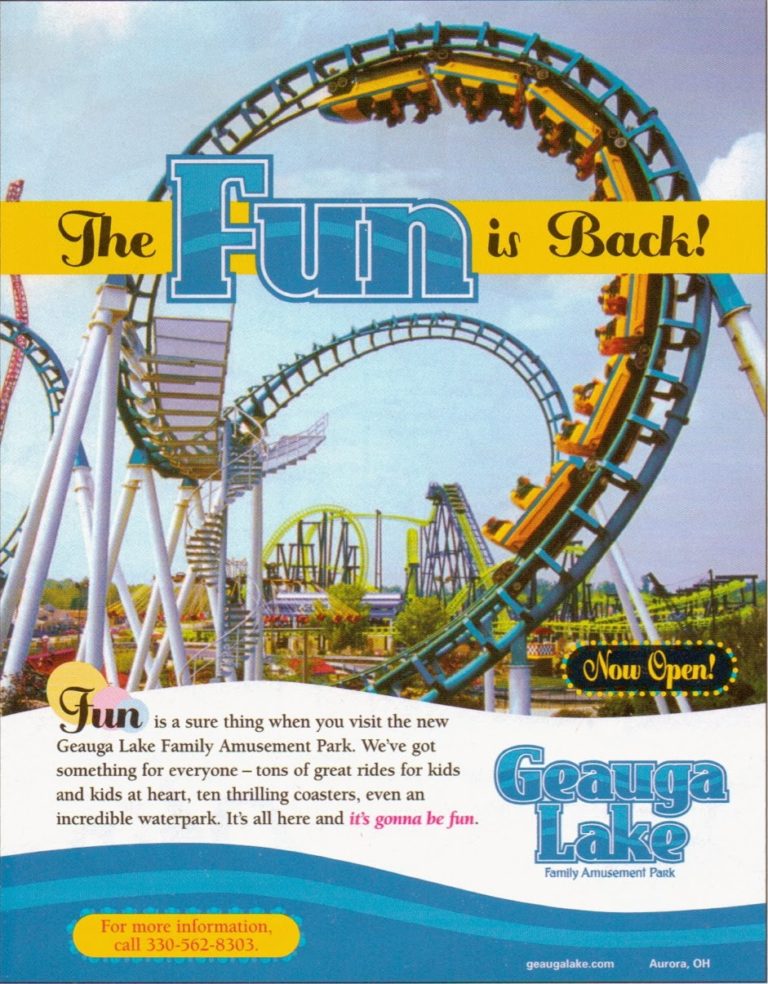

In 2005, Cedar Fair launched Wildwater Kingdom on the SeaWorld/”Wild Side” of the park property. The newer slides from Hurricane Hannah’s were relocated, while the older slides remain in operation until the following year, after which Hurricane Hannah closed permanently. Mr. Hyde’s Nasty Fall was the first attraction removed by Cedar Fair from Geauga Lake at the conclusion of 2005. The attraction served as a donor of parts for Cedar Point’s Demon Drop, which would later aid in its relocation to Dorney Park.
In 2006, Steel Venom and X-Flight were removed from Geauga Lake and prepared for relocation to other Cedar Fair amusement parks. In addition, Cedar Fair reduced the park’s operations to summers only. The removal of Steel Venom and X-Flight made the most sense in order to axe an entire corner of the park in the effort to downsize. Given Hurricane Hannah’s was in the same corner along with Mr. Hyde’s Nasty Fall, they now had less park to deal with and maintain.
The following year, in 2007, the annual Oktoberfest weekend concluded on September 16, which would ultimately be the last day of operation for Geauga Lake.
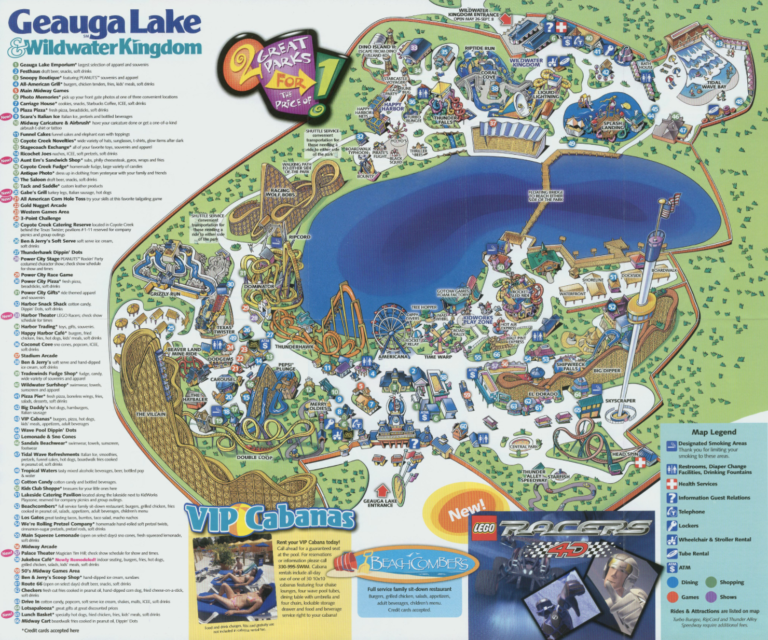
Cedar Fair announced the irreversible closure of Geauga Lake, while Wildwater Kingdom remained open and profitable. Wildwater Kingdom would continue to operate independently for a further ten years, eventually closing after the 2016 season, with Geauga Lake being completely dormant after 130 years.
Plans for redevelopment have failed, and the land remains undeveloped. Plans call for a municipal park and retail/entertainment district with a renovated wave pool and possibly a restaurant within the former SeaWorld aquarium.


we went there in the2000 time frame to us with 4 kids it was a great park. we came from new york.we lived in ohio 1952 -1971 went in usaf 1971-1992.we came home for visits over the years.ceder point alot 1971